History: Since this a relatively newly discovered (2000), and described (2010) ceratopsid species, I’ll present some background. If you’re not interested just skip ahead. Utahceratops Gettyiis a large, robust ceratopsian dinosaur that lived during the Late Cretaceous Period in southern Larmidia which is now approximately Utah in Western North America. The area where Utahceratops lived is described as an ancient floodplain with swamps, ponds, and lakes, and it lived alongside Gryposaurus, Parasaurolophus, Nasutoceratops, Kosmoceratops, Albertosaurus (possibly), and Teratophoneus.
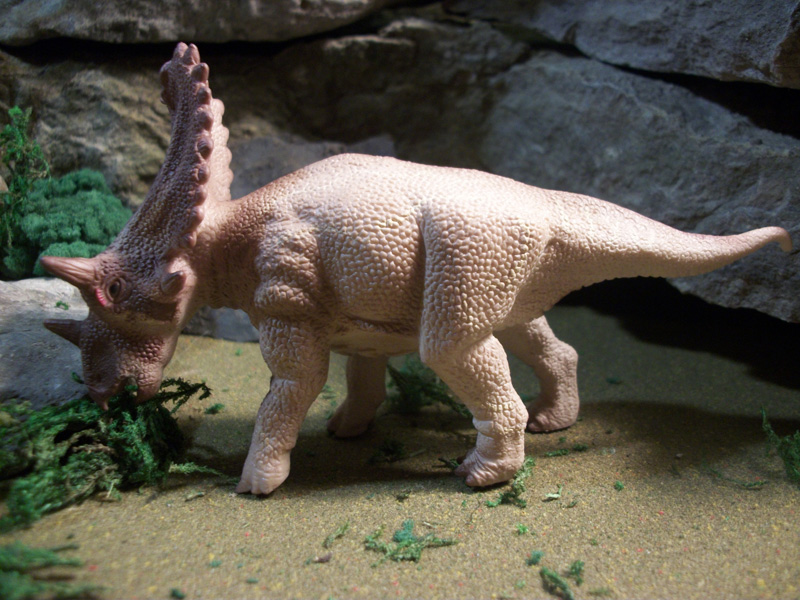
Utahceratops stood 6 feet (2 meters) high and was 18-22 feet (6-7 meters) in length. The skull alone was 7 feet (2.3 meters) long and had two giant brow holes. In contrast to Triceratops which has brow horns orientated forward, the brow horns in both Utahceratops and Kosmoceratops were oriented out to the side rather than forward. Utahceratops had relatively short brow horns in front of a large frill that was slightly indented inwards along its top margin. Its nose horn stuck straight up like a blade, and was longer than those over the eyes. One other cool fact is that the horns found on fossil ceratopsid dinosaurs skulls are the bone cores. When the animal was alive the bone cores would have been covered by the actual horns, which would have made the horns longer in life.Now that we have the proper background of this animal, without any further ado, let’s see how the CollectA Utahceratops stacks up as a toy.
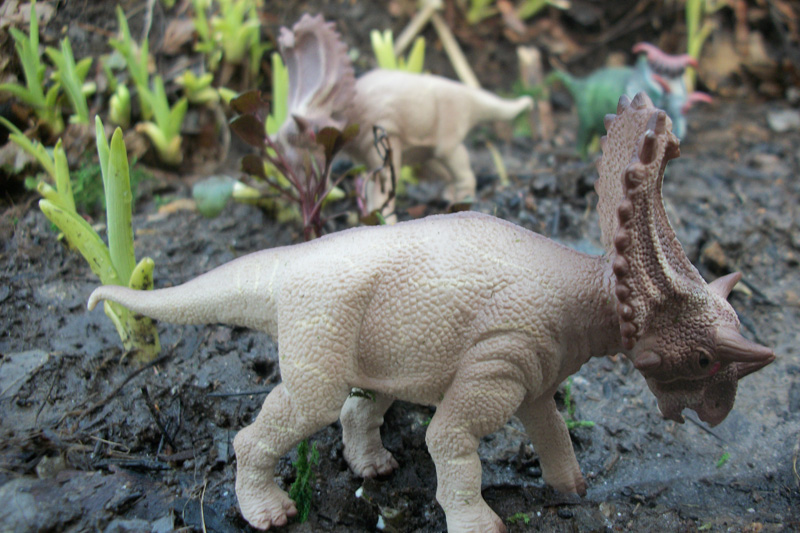
About the toy: This Utahceratops sculpt has its head down, eyes forward, and the left front foot slightly raised with the back legs staggered. The tail is short with some small bends in it. There is bump on the back between the front and back legs.The texturing on the body looks nice with some pleasing skin folds and muscle bulges that are quietly realistic. It has a large skull, extensive neck frill, nose horn, and brow horns that stick outwards like a cow. The nose horn and brow horns are about the same size. It is painted mostly in a light brown with a few light wisps of cream, and has a line of dark brown down the vertebra from the neck to the tail. On the skull above the eyes are flashes of bright red. Under the eyes is a line of reddish brown and cream that extends vertically down to the jaw. The skull is a darker shade of brownish red with lighter brown to cream highlights. The horns are also a pleasing combination of darker and light browns.
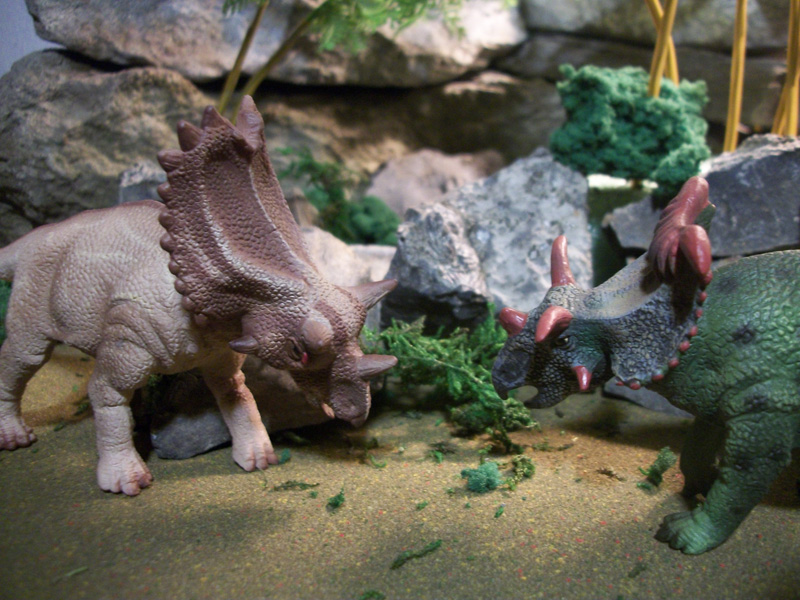
Scientific accuracy: I would like to point out before I present the scientific information, that in college, in anatomy, kinesiology, and physiology, I received C’s. I am also not a mathematician. With all the current scientific information concerning Utahceratops and its kin, this is a very accurate figure. Here is why I say it.
Proportions: The proportions of the figure all seems to line up correctly with its fossil remains, including, what I call, “the bump on the spine”.
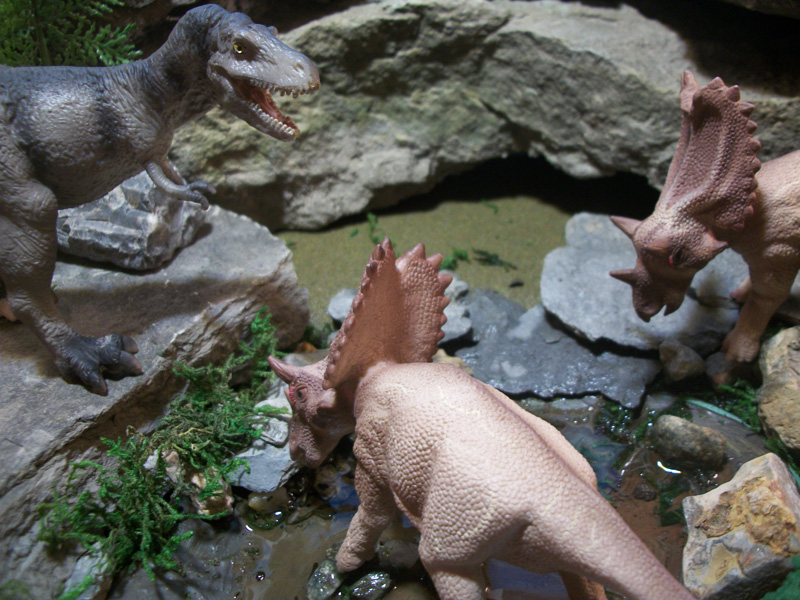
The paint job and skull color: It is a naturalistic paint job, and the color variations on the skull, while not overly flashy, is believable for use as attracting a mate or for group differentiation.
The feet: Utahceratops has been found missing most of the bones in the feet such as phalanges and tarsals. This figure is shown in what has been hypothesized as correct foot placement in ceratopsians as far as I can tell.
The front legs: There is no definite answer on the question of ceratopsians front legs being placed in a sprawling, semi sprawling, or upright forelimbs. Though it is accepted by most that sprawling is most likely incorrect. On this figure they choose upright forelimbs. This could be correct. For example, trackways generally considered belonging to ceratopsid dinosaurs seem to indicate that they employed upright/sagittal quadrupedal limb orientations. This means that currently upright forelimbs could be considered correct.
Skull: They included the bone ridge under the brow horn on the skull which is highlighted in red. The one flaw in its accuracy is that the brow horns appear to be the same size as the nose horn. On the fossilized skull, the nose horn in bigger and longer than the brow horn.
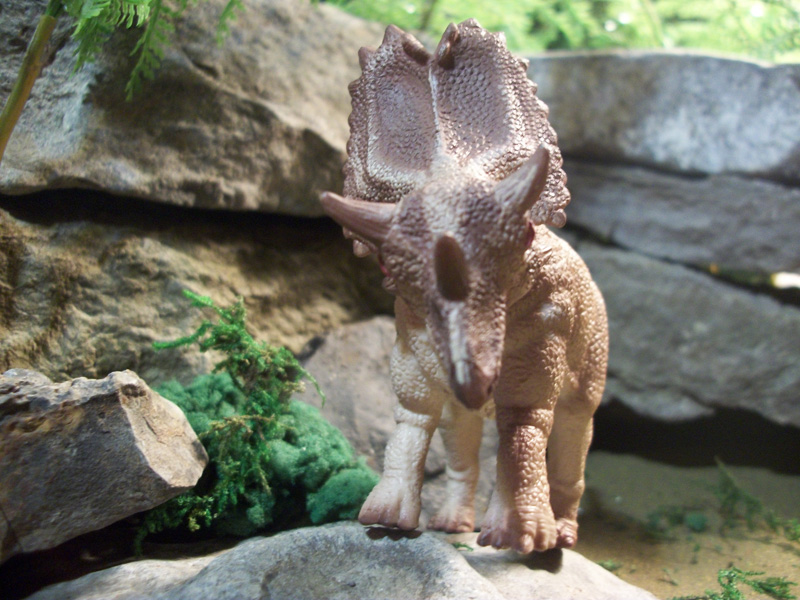
Playability: I have watched three and two year olds play with the Utahceratops figure and they had no problems using it in their imaginary adventures. It is tough, but the paint, especially on the tail and horns can wear fast. For collectors, it doesn’t have the flashiness of some of the otherceratopsid dinosaurs, but it is one of the most realistic and believable dinosaurs from CollectA.
Overall appraisal: The Utahceratops figure is unique but uncomplicated. The color is rather uninspiring, but believable. The pose is passive yet natural and compelling. That is why this is an interesting toy. This figure is so well done that it is hard for it to stand out. CollectA continues to do ceratopsian toys extremely well, and with bated breath I look forward to their renditions of the many species that are still waiting for toy form.
Available on Amazon.com here.
Disclaimer: links to Ebay and Amazon on the DinoToyBlog are affiliate links, so we make a small commission if you use them. Thanks for supporting us!




Great pics, great model, great review.
I totally agree with Robert is a very precise figure suitable for both children and collectors.